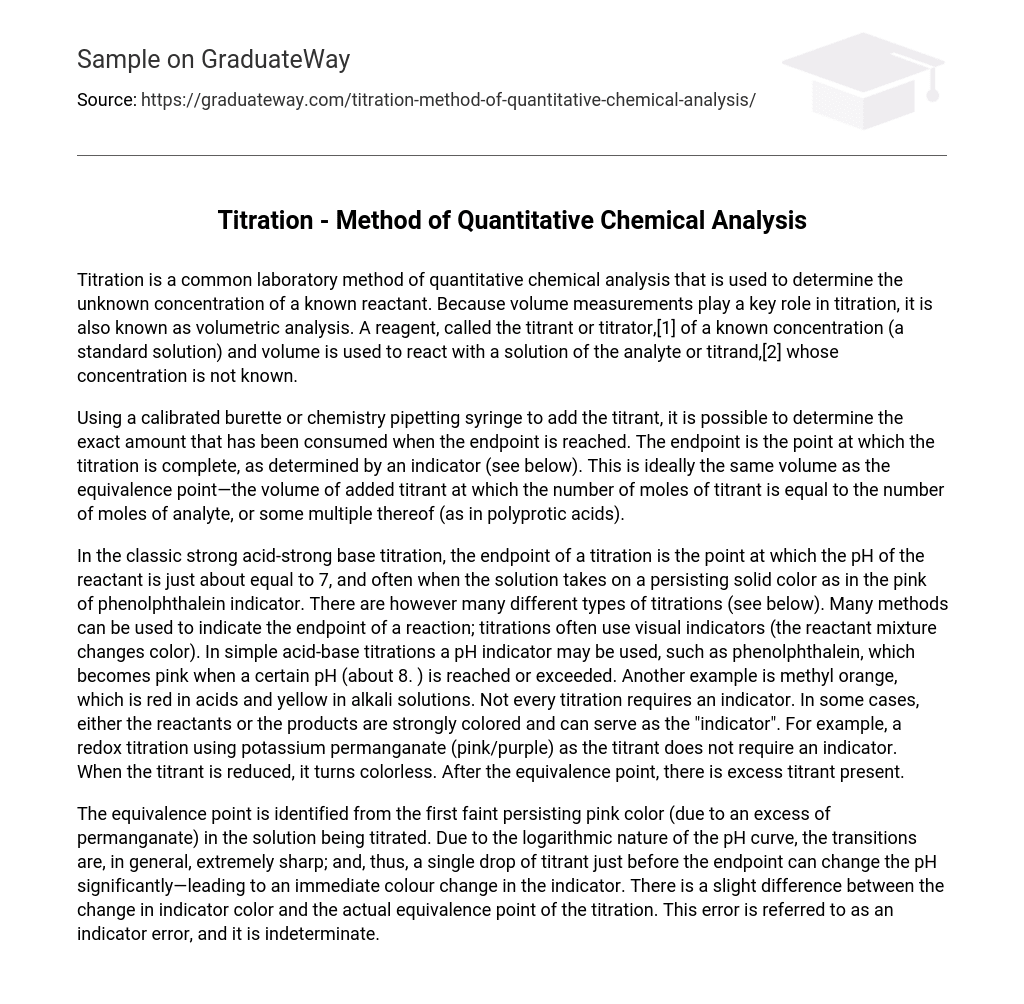Titration, also known as volumetric analysis, is a widely used laboratory method for quantitative chemical analysis. It is used to determine the concentration of an unknown reactant by reacting it with a known concentration and volume of a reagent called the titrant or titrator. The concentration of the analyte or titrand, which is the solution being analyzed, is not known.
By using a calibrated burette or chemistry pipetting syringe, one can determine the precise amount of titrant consumed when the endpoint is reached. The endpoint signifies the completion of the titration, as indicated by an indicator (as explained below). Ideally, the endpoint volume matches the equivalence point, which is the volume of titrant added that corresponds to the same number of moles of titrant as the analyte, or a multiple thereof (such as in polyprotic acids).
In the strong acid-strong base titration, the endpoint occurs when the pH of the reactant reaches approximately 7 and the solution exhibits a persistent solid color, such as phenolphthalein turning pink. Various types of titrations exist, each with its unique characteristics. Visual indicators are commonly employed in titrations to determine the endpoint by observing changes in color within the reactant mixture.
In acid-base titrations, a pH indicator may be utilized. For instance, phenolphthalein turns pink when the pH surpasses a certain level (approximately 8). On the other hand, methyl orange appears red in acidic solutions and yellow in alkaline solutions. Not every titration necessitates an indicator as the reactants or products themselves can serve as an indicator if they possess strong coloration. For example, potassium permanganate (which is pink/purple) can be used as a titrant in a redox titration without the requirement of an indicator. When the titrant undergoes reduction, it becomes colorless. Following the equivalence point, there is an excess of titrant remaining.
The equivalence point is determined by observing the first faint remaining pink color in the solution being titrated, which indicates an excess of permanganate. The pH curve has sharp transitions due to its logarithmic nature, so even a single drop of titrant just before the endpoint can cause a significant pH change and an instant color change in the indicator. There is a small difference between the indicator color change and the true equivalence point of the titration, which is known as an indicator error and cannot be determined precisely.





